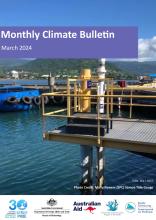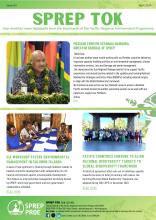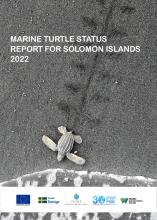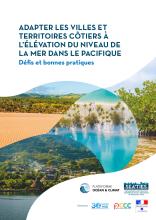COSPPac Monthly Bulletin, March 2024
For April to June 2024, the models agree on below normal rainfall being likely or very likely for Palau's main Islands, Guam, CNMI, northern FSM, northern RMI, New Caledonia, southern Va-nuatu, Niue, southern Cook Islands, and northeast French Polynesia. In addition, there's model agreement on above normal rainfall being likely or very likely in near-equatorial regions from PNG eastward across the northern Solomon Islands, Kiribati (mainly southern Phoenix), Tuva-lu, Tokelau, Wallis and Futuna, Samoa, American Samoa, northern Cook Islands, central French Polynesia and Pitcairn Islands.






